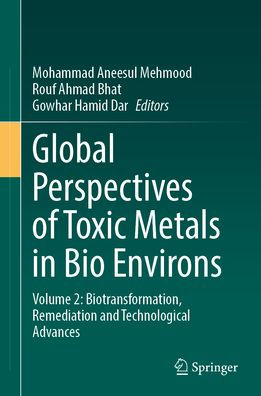Volume II builds on the insights of Volume I by exploring solutions and technological advancements for tackling these toxic metals. It covers the biotransformation processes that toxic metals undergo in biological environments, which can either exacerbate or mitigate their harmful effects. Furthermore, it delves into the remediation technologies and biotechnological innovations aimed at detoxifying affected environments and preventing future contamination.
Together, the two volumes provide a holistic view, with Volume I offering the problem analysis and Volume II presenting practical solutions, making them ideal resources for understanding both the theoretical and applied aspects of managing toxic metals in environmental systems. The first volume frames the scope and urgency of the problem, while the second volume provides viable solutions and forward-looking perspectives.
Volume II builds on the insights of Volume I by exploring solutions and technological advancements for tackling these toxic metals. It covers the biotransformation processes that toxic metals undergo in biological environments, which can either exacerbate or mitigate their harmful effects. Furthermore, it delves into the remediation technologies and biotechnological innovations aimed at detoxifying affected environments and preventing future contamination.
Together, the two volumes provide a holistic view, with Volume I offering the problem analysis and Volume II presenting practical solutions, making them ideal resources for understanding both the theoretical and applied aspects of managing toxic metals in environmental systems. The first volume frames the scope and urgency of the problem, while the second volume provides viable solutions and forward-looking perspectives.

Global Perspectives of Toxic Metals in Bio Environs: Volume 2: Biotransformation, Remediation and Technological Advances
538
Global Perspectives of Toxic Metals in Bio Environs: Volume 2: Biotransformation, Remediation and Technological Advances
538Hardcover

Product Details
| ISBN-13: | 9783031897283 |
|---|---|
| Publisher: | Springer Nature Switzerland |
| Publication date: | 08/31/2025 |
| Pages: | 538 |
| Product dimensions: | 6.10(w) x 9.25(h) x (d) |
